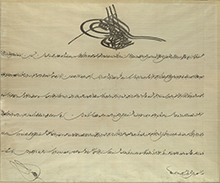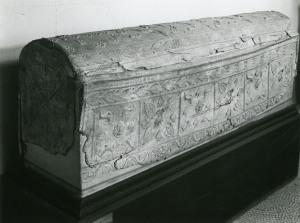
A HISTORY OF ASOR: THE FIRST DECADES
ASOR celebrates 120 years in 2020. In honor of this anniversary, throughout the year we will be posting a history of ASOR, from its foundation to the present. This will include the many accomplishments and activities of ASOR members and ASOR as an organization. Join us as we delve deeper into ASOR’s history with images and anecdotes from the ASOR archives.
The foundation of ASOR can be traced to the late Nineteenth Century, when multiple academic organizations recognized the need for “establishing an overseas research center in the Near East” (Meyers 2001; 4). With the help of the Archaeological Institute of America (AIA), American Oriental Society (AOS), and the Society for Biblical Literature (SBL), ASOR was founded as the American School of Oriental Study and Research in Palestine. Originally intended as an organization to study scripture in the Holy Land, its parameters were expanded to include “linguistic, archaeological, historical, and other kindred studies and researches” within the Levant (From Founding Resolutions, 1900 in Meyers 200; 3). With support from 21 academic institutions, the scope of the American School of Oriental Study and Research in Palestine began to include research from different time periods and cultures throughout the Near East.
With the research goals established, ASOR needed a physical home from which to conduct business and research. Under leadership from the first Director, Charles C. Torrey, an Imperial Firman from the Ottoman Empire was granted for the formation of offices in Jerusalem. Beginning at the Grand New Hotel near the Jaffa Gate, the American School of Oriental Study and Research in Palestine led a nomadic existence for the next 24 years. There was no permanent home for the organization until 1924 when under the direction of William F. Albright, the Jerusalem School was constructed.
Throughout the first two-decades of ASOR’s existence, research took place at an inconsistent pace due to the instability of the region, the First World War and the collapse of the Ottoman Empire. Despite this, the first archaeological excavation, led by Torrey, began in 1901 at the tombs at Sidon. Further excavations were led to Samaria in 1908 through the funding of Reverend James B. Nies, PhD., a regular and generous donor to ASOR during its first years. A significant step for ASOR was the publication of first issue of Bulletin of the American School of Oriental Research (BASOR) in 1919. Publication of this annual journal has occurred for the past 101 years, detailing research in the Near East.
The most significant moment in ASOR’s early decades was the legal incorporation of the organization in the United States in 1921. These articles formally changed the name to the American Schools of Oriental Research, which “was suggestive of the expansion of geographical interests and the development of other research institutes” (Meyers 2001; 11). This marked a turning point for ASOR in which the organization broadened its research interests and capabilities.
Sources:
Meyers, Eric M. and Joe D. Seger. 2001. ASOR: A History of the American Schools of Oriental Research. In An ASOR Mosaic, edited by Joe D. Seger, pp. 2-103. American Schools of Oriental Research, Boston.
American Society of Overseas Research
The James F. Strange Center
209 Commerce Street
Alexandria, VA 22314
E-mail: info@asor.org
© 2023 ASOR
All rights reserved.
Images licensed under a Creative Commons Attribution-NonCommercial-ShareAlike 4.0 International License
COVID-19 Update: Please consider making payments or gifts on our secure Online Portal. Please e-mail info@asor.org if you have questions or need help.

